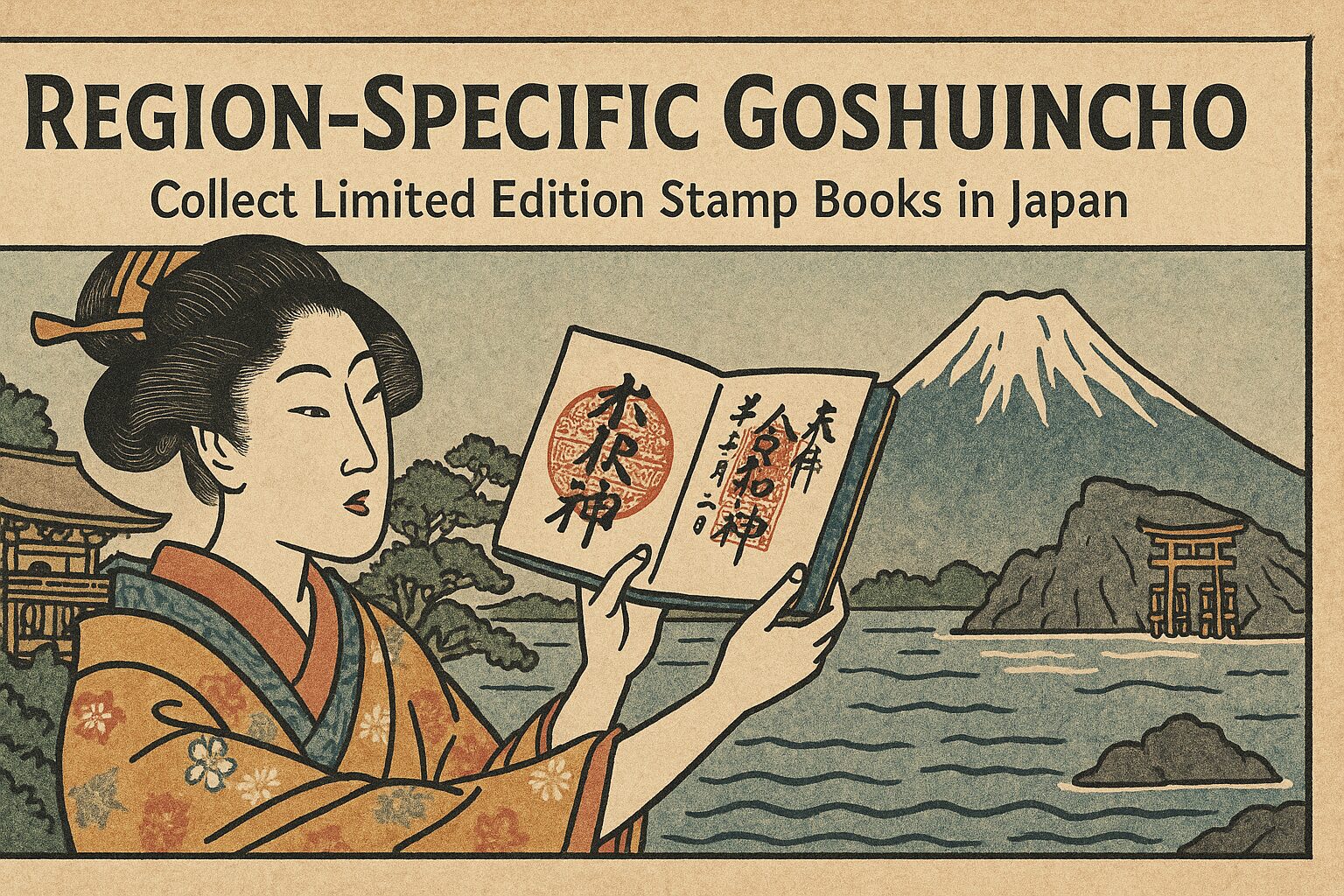- Introduction – Why Limited Goshuincho Are Special
- 1. Tokyo – Modern and Traditional Styles
- 2. Kyoto – Elegant and Historic
- 3. Nara – Sacred and Playful Designs
- 4. Hiroshima – The Floating Shrine of Miyajima
- 5. Other Regional Highlights
- Tips for Collecting Regional Goshuincho
- Conclusion – Collect Memories by Region
Introduction – Why Limited Goshuincho Are Special
A Goshuincho (御朱印帳) is more than just a notebook—it is a sacred stamp book where temples and shrines leave a unique calligraphy seal. While standard Goshuincho are available everywhere, many temples and regions in Japan offer exclusive, limited-edition designs. These books capture the essence of each place, turning your travels into a cultural collection.
For tourists, these limited Goshuincho are not just souvenirs—they are art pieces, spiritual items, and memory keepers.
1. Tokyo – Modern and Traditional Styles
Tokyo is home to some of Japan’s most iconic shrines and temples, each offering unique Goshuincho.
- Sensō-ji (Asakusa) – Famous for its giant red lantern at Kaminarimon, the Goshuincho often features the temple gate or pagoda in vibrant designs.
- Meiji Jingu – A serene forest shrine near Harajuku, offering elegant and minimalistic books in deep indigo with the chrysanthemum crest.
Tokyo’s Goshuincho often blend tradition and modern aesthetics, making them popular with first-time visitors.
You can explore temple and shrine information in Tokyo on the Tokyo Metropolitan Travel Guide
2. Kyoto – Elegant and Historic
Kyoto, Japan’s ancient capital, is a paradise for Goshuin collectors.
- Kiyomizu-dera – Designs include the temple’s wooden stage with cherry blossoms or autumn leaves.
- Kinkaku-ji (Golden Pavilion) – Luxurious gold accents on the cover make this Goshuincho a true collector’s item.
Many Kyoto shrines release seasonal editions, such as spring cherry blossoms or autumn momiji (red maple leaves).
For more about Goshuincho in Kyoto, visit the Kyoto Official Travel Guide
3. Nara – Sacred and Playful Designs
Nara is known for its historic temples and friendly deer.
- Tōdai-ji – A book featuring the Great Buddha (Daibutsu) or the temple’s famous Nandaimon gate.
- Kasuga Taisha – Often decorated with deer motifs or hanging lanterns, perfect for travelers who love playful yet sacred designs.
In Nara, some Goshuincho are printed with deer footprints, symbolizing the animals as messengers of the gods.
Learn more about sacred temples and Goshuin in Nara through the Nara Visitors Bureau
4. Hiroshima – The Floating Shrine of Miyajima
The Itsukushima Shrine on Miyajima Island is famous for its “floating” red torii gate.
Their Goshuincho often depicts the torii rising from the sea, with vivid vermillion and blue contrasts.
At Itsukushima Shrine, the iconic floating torii gate inspires many exclusive Goshuincho designs. For more information, visit the official Itsukushima Shrine website. You can also explore travel tips on the Miyajima Tourist Association site
Many travelers choose to buy their first Goshuincho here because of its striking symbolism.
5. Other Regional Highlights
- Hokkaido – Shrines may feature snowy landscapes, cranes, or lavender fields in summer editions.
- Nagano (Zenko-ji) – Often has mountain-themed motifs, reflecting its spiritual setting.
- Kyushu (Dazaifu Tenmangu) – Known for designs featuring plum blossoms, a symbol of the god of learning, Sugawara no Michizane.
Tips for Collecting Regional Goshuincho
- Limited Availability – Many designs are seasonal or only sold locally. Arrive early to avoid missing out.
- Budget for Collecting – Prices usually range from ¥1,000–¥2,000, but special editions can be higher.
- Portability – Collecting too many may get heavy—consider carrying just one or two per trip.
Conclusion – Collect Memories by Region
Limited Goshuincho are not just stamp books—they are a way to collect memories, art, and culture from different regions of Japan.
Each one reflects the spirit of its temple or shrine, making your collection a unique story of your journey.
👉 If you’re new to Goshuin, start with our basic guide:
[What is Goshuin? The Japanese Temple and Shrine Stamp Book Explained]
👉 Want to choose your first one? Read our guide:
[How to Choose a Goshuincho (Goshuin Stamp Book)]
For general information about traveling in Japan, check the Japan National Tourism Organization (JNTO).



コメント